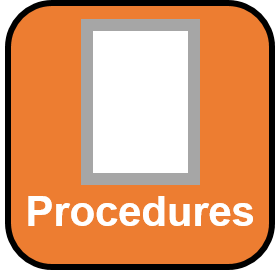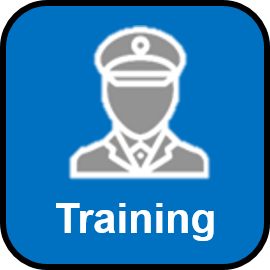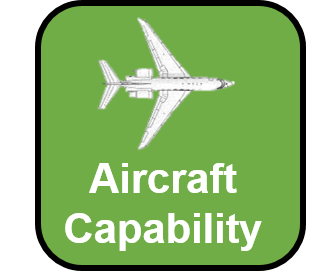Fact Checking Medical Myths in Aviation

Use the interactive dashboard below to learn more about accident and incident information reported to the Office of Accident Investigation & Prevention. You can also view preliminary accident information reported to the Office of Accident Investigation & Prevention. All information is preliminary and subject to change.
 Procedural Statement of Compliance (PSOC): The PSOC provides evidence of procedures compliance.
Procedural Statement of Compliance (PSOC): The PSOC provides evidence of procedures compliance.
Operators should obtain a PSOC for their procedures from their procedure provider. The following are contacts for the procedure providers participating in the Streamlined Part 91 Operational Approval Process. You will not be able to obtain the PSOC from the FAA.
| Procedure Provider | POC Email | Phone |
|---|---|---|
| Aircraft RVSM Services LLC | ksaero.sales@gmail.com | 316-644-2670 |
| Flycerts LLC | kbartler@flycerts.com | 321-917-0905 |
| Fly Compliant LLC | mike@flycompliant.com | 310-951-1471 |
| Harry Driscoll & Associates | harry@harrydriscoll.com | 713-416-1410 |
| Jet RVSM Services | PSOC@jetrvsm.com | 877-538-7876 |
| Nimbl (formerly AviationManuals) | info@gonimbl.com | 240-546-4030 |
| Quality Resources LLC | lfrisone@qualityresources.biz | 216-797-1710 |
| SourceOne Aviation Compliance | info@rvsmcompliance.com | 602-456-1777 |
Procedure Providers are encouraged to use this guide to prepare and submit a request to obtain FAA acceptance of a PSOC.
| Date | Title | Revision |
|---|---|---|
| 5/15/2023 | Procedures Statement of Compliance (PSOC) Guide | 3.0 |
| 5/6/2025 | PSOC Template | 1.0 |
 Training Statement of Compliance (TSOC): The TSOC provides evidence of training compliance.
Training Statement of Compliance (TSOC): The TSOC provides evidence of training compliance.
Operators should obtain a TSOC for their training from their training provider. The following are contacts for the training providers participating in the Streamlined Part 91 Operational Approval Process. You will not be able to obtain the TSOC from the FAA.
| Training Provider | POC Email | Phone |
|---|---|---|
| 30 West IP | Team@30westip.com | 817-658-1078 |
| Aircrew Academy | info@aircrewacademy.com | 843-557-1266 |
| CAE | TSOC@cae.com | |
| Cirrus Aircraft | jpeterson@cirrusaircraft.com | 218-600-9043 |
| Computer Training Systems | syearns@ctsys.com | 316-265-1585 |
| Flight Safety International (FSI) | TSOC@FlightSafety.com | |
| Ocean 360 Aviation Training | Questions@ocean360training.com | 817-262-9425 |
| Scott IPC | Shawn@scottipc.com | |
| TrainingPort.net | Support@TrainingPort.net | 604-270-1343 |
Training Centers are encouraged to use this guide to prepare and submit a request to obtain FAA acceptance of a TSOC.
| Date | Title | Revision |
|---|---|---|
| 5/15/2023 | Training Statement of Compliance (TSOC) Guide | 3.0 |
| 5/6/2025 | TSOC Template (LOA A056, C048, C052, C063, and C073) | 1.0 |
| 5/6/2025 | TSOC Template (LOA B036, B039, and B046) | 1.0 |
 Aircraft Statement of Capability (ASOC): The ASOC provides evidence of aircraft capabilities.
Aircraft Statement of Capability (ASOC): The ASOC provides evidence of aircraft capabilities.
Operators should obtain the ASOC for their aircraft from their aircraft manufacturer. The following are contacts for the aircraft manufacturers participating in the Streamlined Part 91 Operational Approval Process. You will not be able to obtain an ASOC from the FAA.
| Aircraft Manufacturer | POC Email | Phone |
|---|---|---|
| Bombardier | ac.yul@aero.bombardier.com | |
| Cessna by Textron Aviation | mthompson2@txtav.com | 316-517-0155 |
| Cirrus Aircraft | twellik@cirrusaircraft.com | |
| Dassault | falconpilot@dassault-aviation.com | |
| Embraer | loarvsm@embraer.com | |
| Gulfstream | Waypoints.inquiry@gulfstream.com |
Aircraft manufacturers are encouraged to use this guide to prepare and submit a request to obtain FAA acceptance of an ASOC.
| Date | Title | Revision |
|---|---|---|
| 5/15/2023 | Aircraft Statement of Capability (ASOC) Guide | 3.0 |
| 5/6/2025 | ASOC Template | 4.0 |
Nick Fuller is the Federal Aviation Administration’s (FAA) Executive Director of the Air Traffic  Safety Oversight Service (AOV), responsible for directing the independent, risk-based, data-driven safety oversight of air navigation services.
Safety Oversight Service (AOV), responsible for directing the independent, risk-based, data-driven safety oversight of air navigation services.
Wake vortices are masses of counter-rotating air created as a by-product of the generation of lift. Every aircraft that uses a fixed or rotary airfoil to generate lift in flight creates wake vortices of varying initial strength and persistence. Wake vortices from similar or larger size generating (lead) aircraft are a hazard to encountering (following) aircraft that may vary from light turbulence encounters to a Loss of Control-Inflight or in-flight breakup accident.
Pilots are advised to:
Pilots have the ultimate responsibility for the safe operation of their aircraft. Pilots arriving and departing from uncontrolled airports, or accepting a clearance for a visual approach, operating using Visual Flight Rules (VFR) outside of controlled airspace are accepting the responsibility for wake vortex encounter avoidance and mitigation. When Air Traffic Control (ATC) is providing separation services, the controller shares in this responsibility. ATC mitigates wake vortex encounter risk through minimum separation standards between leader aircraft and follower aircraft, as well as information reports to pilots such as Wake Turbulence Cautionary Advisories.
Below you will find links to Wake Turbulence guidance, as well as detailed information on the airspace and equipment requirements and capabilities.
Advisory Circulars (AC)
| Number | Title |
|---|---|
| AC 90-23G | Aircraft Wake Turbulence |
Other Information and Guidance
| Number | Title |
|---|---|
| Aeronautical Information Manual (AIM) | Chapter 7 Section 4. Wake Turbulence |
| Wake Turbulence Training Aid | FAA Wake Turbulence Training Aid |
| ICAO AUPRTA | Airplane Upset Prevention & Recovery Training Aid (Rev 3) |
| JO 7110.126B | Consolidated Wake Turbulence (CWT) |
| JO 7110.308D | Simultaneous Dependent Approaches to Closely Spaced Parallel Runways |
| JO 7110.316 | Reduced Wake Turbulence Separation on Departure from Heavy/B757 Aircraft Departing Parallel Runways, Spaced Less Than 2,500 Feet, Using Wake Turbulence Mitigation for Departures (WTMD) |
| JO 7360.1 (as revised) | Aircraft Type Designators |
| JO 7110.65 (as revised) | Air Traffic Control |
Focal Point: Flight Technologies and Procedures Division, Flight Operations Group (AFS-410)
Email: 9-AWA-AVS-AFS-400-Flight-Technologies-Procedures@faa.gov
Airborne Collision Avoidance System (ACAS) was developed as a safety-enhancing system to reduce the likelihood of mid-air collisions between aircraft. ACAS is a family of airborne devices that function independently of the ground-based Air Traffic Control (ATC) system and provides collision avoidance for a broad spectrum of aircraft types.
ACAS iterations include Traffic Alert and Collision Avoidance System (TCAS) I, TCAS II, and ACAS Xa. TCAS I provides Traffic Advisories (TAs) that indicate on a display the positions and relative altitudes (if the target is altitude reporting) of transponder operating aircraft to assist a flightcrew in the visual acquisition of aircraft with a potential for collision.
ACAS II (TCAS II or ACAS Xa) provides both TAs and Resolution Advisories (RAs). RAs are recommended vertical maneuvers, or vertical maneuver restrictions that maintain or increase the vertical separation between aircraft for collision avoidance.
With the introduction of ACAS Xa, the FAA now permits four variants of ACAS II in U.S. airspace, TCAS II version 6.04a Enhanced, TCAS II version 7.0, TCAS II version 7.1, and ACAS Xa including optional ACAS Xo features. If an aircraft has an ACAS II installed, it must be TCAS version 7.0, version 7.1, or ACAS Xa to operate within Reduced Vertical Separation Minimum (RVSM) airspace.
Operators flying outside of U.S. territorial airspace are advised to ensure that appropriate ACAS software updates are incorporated for compatibility with oceanic and international equipage and operation standards for ACAS. International requirements differ by type of operation, type of aircraft, and airspace entry requirements. Consult documents of ICAO and the Aeronautical Information Publication (AIP) of the Civil Aviation Authority (CAA) with jurisdiction of the airspace to be flown for more information.
Below you will find links to ACAS regulations and guidance, as well as detailed information on the airspace and equipment requirements and capabilities.
Regulations
| Number | Title |
|---|---|
| 49 U.S.C § 44716 | Collision Avoidance System |
| 14 CFR § 91.123 | Compliance with ATC Clearances and Instructions |
| 14 CFR § 91.221 | Traffic Alert and Collision Avoidance System Equipment and Use |
| 14 CFR § 91.227 | Automatic Dependent Surveillance-Broadcast (ADS-B) Out equipment performance requirements. |
| 14 CFR § 91.1045 | Additional Equipment Requirements |
| Appendix G to Part 91 | Operations in Reduced Vertical Separation Minimum (RVSM) Airspace |
| 14 CFR § 121.356 | Collision Avoidance System |
| Appendix B to Part 121 | Airplane Flight Recorder Specification |
| 14 CFR § 125.224 | Collision Avoidance System |
| Appendix D to Part 125 | Airplane Flight Recorder Specification |
| 14 CFR § 129.18 | Collision Avoidance System |
| 14 CFR § 135.180 | Traffic Alert and Collision Avoidance System |
| Appendix D to Part 135 | Airplane Flight Recorder Specification |
| 49 CFR § 830.5 | Immediate Notification |
Advisory Circulars (AC)
| Number | Title |
|---|---|
| 90-120 | Operational Use of Airborne Collision Avoidance Systems |
| 20-131A | Airworthiness Approval of Traffic Alert and Collision Avoidance Systems (TCAS II) and Mode S Transponders |
| 20-151C | Airworthiness Approval of Traffic Alert and Collision Avoidance Systems (TCAS II), Versions 7.0 & 7.1 and Associated Mode S Transponders |
Related Safety Alerts for Operators (SAFOs) and Information for Operators (INFOs)
| Number | Title |
|---|---|
| SAFO 22003 | Traffic Alert and Collision Avoidance System II (TCAS II) Alerts at Denver International Airport (DEN) |
| SAFO 11010 | TCAS II Guidance and Training for Title 14 of the Code of Federal Regulations (14 CFR) Part 135 & Part 125 Certificate Holders, Part 125 Letter of Deviation Authority (LODA) holders (125M), Part 91 Subpart K, (91K) Program Managers, Part 91 Operators and Part 142 Training Centers. |
| InFO 23010 | Planned Implementation of 3° Lateral Offset Approaches Serving Runway 16R at Denver International Airport (KDEN) to Reduce Traffic Alert and Collision Avoidance System (TCAS) Resolution Advisories (RA) with Runway 16L Approaches. |
| InFO 08039 | Responding to a TCAS resolution advisory (RA) – Fly the RA |
Other Information and Guidance
| Number | Title |
|---|---|
| FAA Booklet HQ-111358 | Introduction to TCAS II Version 7.1 |
| TSO-C118a | Traffic Alert and Collision Avoidance System (TCAS) Airborne Equipment, TCAS I |
| TSO-C119e (Historical) | Traffic Alert and Collision Avoidance System (TCAS) Airborne Equipment, TCAS II with Hybrid Surveillance |
| TSO-C219a | Airborne Collision Avoidance System (ACAS) Xa/Xo |
| RTCA DO 185B | Minimum Operational Performance Standards for TCAS II |
| RTCA DO 300A | Minimum Operational Performance Standards for Traffic Alert and Collision Avoidance System (TCAS II) Hybrid Surveillance |
| RTCA DO 385A | Minimum Operational Performance Standards for Airborne Collision Avoidance System X (ACAS X) (ACAS Xa and ACAS Xo), Volume I and Volume II. |
| ICAO DOC 9863 | Airborne Collision Avoidance System (ACAS) Manual |
| ICAO Appendix 6, Part 1 | International Commercial Air Transport Aeroplanes |
| ICAO Appendix 6, Part 2 | International General Aviation Aeroplanes |
| ICAO Annex 10, Volume IV | Surveillance and Collision Avoidance Systems, ACAS Standards and Recommended Practices (SARPs) |
| FAA Order 8900.1, Vol.3, Ch.19, § 8 | Flightcrew Member Training and Qualification Programs, Special Training |
Focal Point: Flight Technologies and Procedures Division, Flight Operations Group (AFS-410)
Email:9-AWA-AVS-AFS-400-Flight-Technologies-Procedures@faa.gov
This application guide was developed by the Federal Aviation Administration (FAA) Flight Technologies and Procedures Division (AFS-400) to provide users with an organized method for submitting required content as part of an Oceanic and Remote Continental application package. This guide is optional. However, we recommend its use because it will help expedite the application process. Please note that there are two application formats below. The first link is for certificated operations (i.e. Parts 91K, 121, 125, and 135). The second link is only for Part 91 operators.
In order to properly view this document, download it to your desktop and open it with Adobe Acrobat (preferred) or download the free Adobe pdf-Reader at: https://www.adobe.com/acrobat/pdf-reader.html
The AIR Integrated Certificate Management Division supports the certification, system oversight and continued operational safety functions of commercial airplanes and engines.